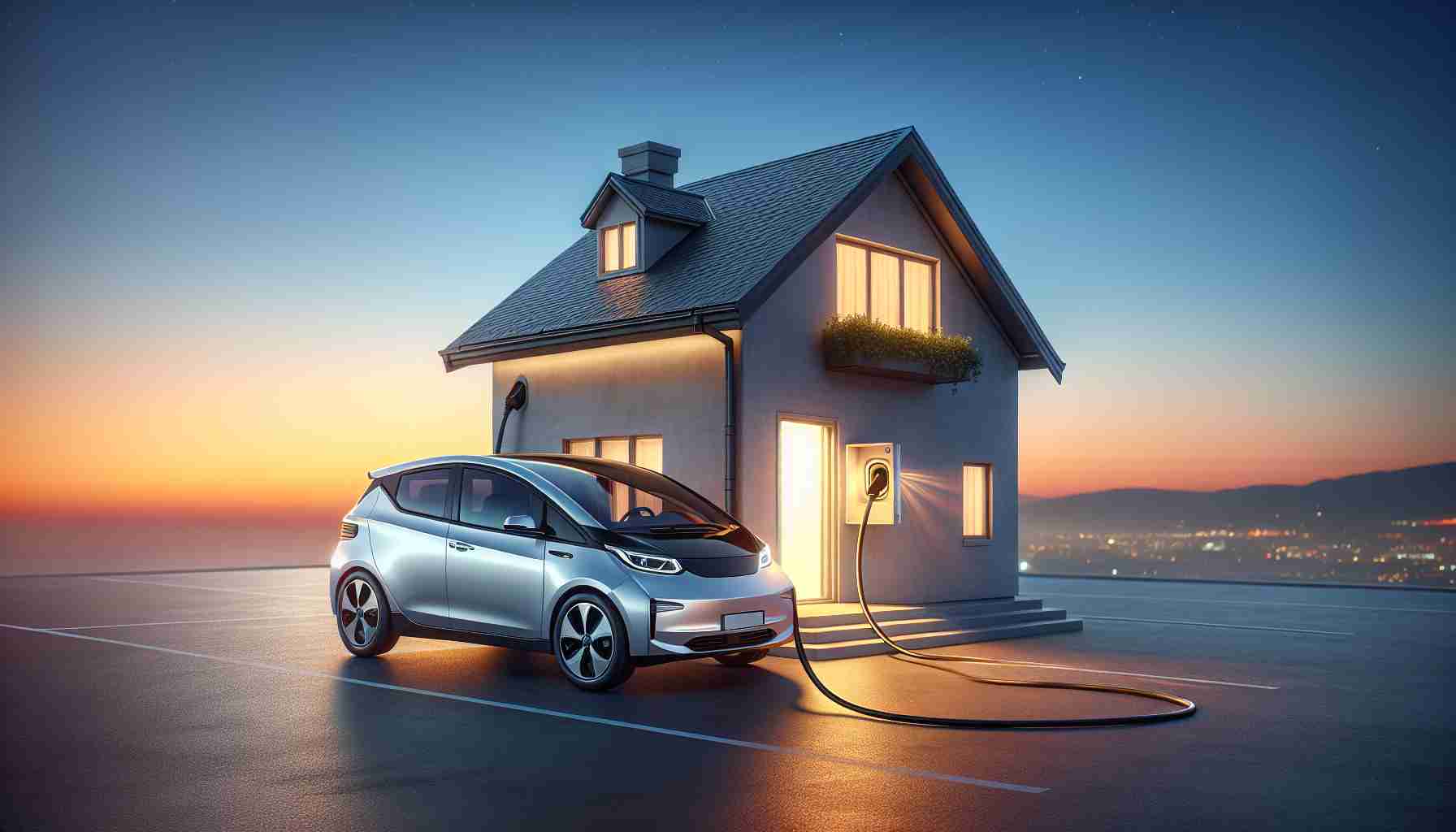
The Future of Electric Vehicles as Home Energy Storage
A groundbreaking study from the Fraunhofer Institute in Germany reveals the transformative potential of bidirectional charging technology in electric vehicles (EVs). This innovation could turn EVs into effective energy storage solutions, enabling households in Europe, particularly in Germany and France, to significantly cut their energy costs and rely less on conventional power sources.
At present, most EVs are underutilized, spending nearly 23 hours each day idle. The research suggests that during these periods, EVs could serve as temporary storage batteries for the power grid. This would help manage energy supply during peak demand, particularly benefiting from renewable resources like solar and wind.
When combined with microgeneration technologies, the bidirectional capability allows EVs to store energy gathered during the day and release it when needed, especially in the evenings when demand spikes. Recent projections estimate that if leveraged properly, EVs could potentially supply up to 20% of the EU’s total electricity needs.
Moreover, with an average EV battery capacity hitting 60 kWh, the global fleet could theoretically deliver 90 billion kWh of electricity. Homeowners could reap savings of €31 to €780 annually by either using their EV battery to power their homes or selling surplus energy back to the grid.
Forward-thinking countries like France are already incentivizing the adoption of this technology, paving the way for a sustainable energy future.
Unlocking the Power of Electric Vehicles: The Future of Home Energy Storage
The Revolution of Bidirectional Charging Technology
As electric vehicles (EVs) continue to saturate the market, innovative technologies such as bidirectional charging are paving the way for a transformative approach to energy management. A recent study by the Fraunhofer Institute emphasizes the potential of using EVs not only as modes of transportation but also as dynamic energy storage solutions, fundamentally reshaping the energy landscape in Europe.
How Bidirectional Charging Works
Bidirectional charging technology allows EVs to send power back to the grid or supply energy directly to homes. During prolonged periods when the vehicle is parked—typically 23 hours a day—these EVs could effectively operate as battery storage units. By harnessing renewable energy sources, such as solar and wind, EVs can help stabilize energy supply, distributing power during peak demand, significantly lowering dependency on traditional power sources.
Significant Impact on Energy Demand
Projections from the Fraunhofer study suggest that if implemented widely, the electric vehicle fleet could contribute as much as 20% of the total electricity needs for the European Union. With an average battery capacity of 60 kWh, this approach could enable EVs to collectively provide approximately 90 billion kWh of electricity.
Economic Benefits for EV Owners
The economic implications for homeowners utilizing bidirectional charging are substantial. Annual savings could range from €31 to €780, depending on energy consumption patterns and the ability to sell excess power back to the grid. This financial incentive, coupled with advancements in technology, is expected to drive further adoption of EVs as energy storage solutions.
Trends and Innovations in EV Energy Storage
Countries such as France are championing policies to enhance the adoption of bidirectional charging. Incentives for both consumers and automotive manufacturers are crucial in accelerating the integration of EVs into the energy market.
Use Cases for Bidirectional Charging
1. Home Backup Power: EVs can serve as backup power sources during outages, providing essential power to homes.
2. Energy Arbitrage: Homeowners can charge their EVs when electricity prices are low and discharge them back to the grid when prices are high.
3. Support for Renewable Energy: By using stored energy generated by solar panels, EVs help reduce the overall carbon footprint.
Limitations and Challenges
While the prospects of integrating EVs into energy systems are exciting, several limitations exist, including:
– Initial Investment: The upfront cost of EVs and necessary charging infrastructure may deter some consumers.
– Regulatory Framework: Policies and regulations must evolve to support widespread implementation and ensure consumer protection.
– Battery Degradation: Concerns regarding the long-term impact of frequent cycling of EV batteries on their lifespan need to be addressed.
The Future Landscape of EV Energy Storage
As the global focus shifts towards sustainable energy, the integration of EVs into the energy ecosystem appears promising. Future predictions anticipate not only growth in EV adoption but also advancements in smart grid technology and better energy management solutions.
Conclusion
The capability of electric vehicles to double as home energy storage is set to revolutionize how we think about both transportation and energy consumption. With ongoing innovations in bidirectional charging and supportive policies from governments, EVs could soon become integral components of a resilient energy future, enabling communities to harness the full potential of renewable energy sources.
For more information on the evolving landscape of electric vehicles and sustainable energy solutions, visit Fraunhofer Institute.



